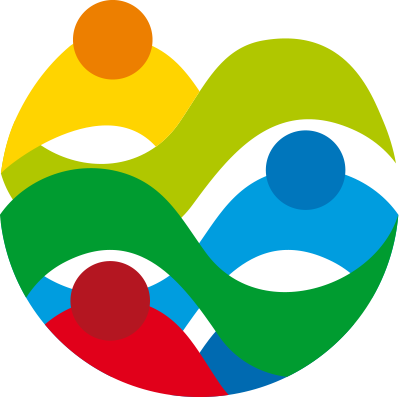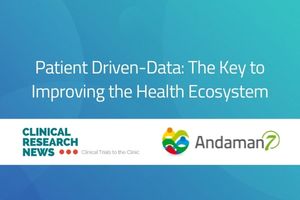Contributed Commentary by Vincent Keunen
April 13, 2021 | I am often asked what the benefits of Personal Health Records (PHRs) are, not just to patients, but to the wider health system. The most straightforward answer is this: patients who are engaged in their healthcare and understand their condition have better health outcomes. Beyond the individual benefits to the patient, this saves time, money, and can help develop more efficient treatments. I believe PHRs have a vital role to play in patient empowerment, effective clinical trials, and preventative and precision medicine around the world.
PHRs differ from Electronic Health Records (EHRs) because they are directly for the patients themselves.
I have worked as a software engineer building health records for 30 years. In 2007, I was diagnosed with leukaemia; three months later my 10-year-old son was diagnosed with metastatic bone cancer. Our patient journeys were very different. I was fortunate to be treated with a drug which is very efficient and restores life expectancy. My son had radiotherapy, chemotherapy and, eventually, had to have his right leg amputated. At the time, it was difficult to get control of our health data, which I felt was critical. That is why I created Andaman7, to help future research and empower patients with their own data.
Many people are trying to improve the system by creating patient portals or collecting data on a central server in the cloud. However, I believe these solutions are risky for security and privacy reasons. Andaman7 is a distributed system, meaning the data is stored on the patient’s smartphone rather than online where it could be targeted by hackers. The data being on the phone also ensures the control is REALLY in the patients’ hands, not the manager of the portal. The PHR can also collect data from other sources (connected devices, other apps, other online sources like DNA analysis etc) whereas EHRs were not built for that. Despite being a free app, patients collect their data, control their data and nothing is done with that data by default.
So how can it benefit the wider healthcare ecosystem?
Better data means more efficient treatment and development
Every time patients visit their doctors they are asked questions about their medical history. Studies, as illustrated by the Ebbinghaus forgetting curve, illustrate just how rapidly we forget any such communication, especially data, as soon as conveyed. If patients can capture and easily access their data, via their smartphone, they can give more complete information. This leads to more efficient diagnosis and treatment, reducing the number of appointments needed, and saving money.
Studies have also shown that up to 30% of EHR datain hospitals is wrong. There are lots of reasons for this: a lack of time; information not being updated when patients see multiple professionals; prescriptions being changed. When a patient can see her data, she can quickly point to what is wrong and correct it. The better data we have, the better we can tackle health challenges.
At a development level, PHRs can be used by pharma companies and manufacturers which need to run clinical and device trials via electronic questionnaires. There are a number of advantages to this patient-centric approach. Consent information and the trial itself can be adapted and provided in different formats to meet diverse learning styles and levels of health literacy. Data quality is improved as patients take the study more seriously and manage the quality of their responses more accurately because they don’t use “a simple clinical trial app” which is of limited benefit to them, but they use their full PHR. Dropout rates and cancelled trials are consequently reduced as patients feel more engaged through their control of what is shared. Finally, over multiple studies or longer time periods, an extended relationship can be achieved with patients and a wider range of data collected.The logical next step here strongly supports Patient Engagement Platforms (PEPs).
PHRs already offer shallow integration with other services. However, I believe the full potential of PHR can be achieved with further integration. For example, if a patient contacts a pharmacist, they can consent to sharing their drug data so the pharmacist can look at incompatibilities in medicines. If a patient has their DNA tested and consents to share their information, the company could combine DNA analysis with medical history and potentially find new and important insights which could be shared back to the medical community. Once fed back to the patient's PHR directly, it is then ready to be shared by the patient with his family doctor, for example.
I also believe PHR will be key for preventative and precision medicine. We are slowly solving the health problems of the world—60% of cancers are now treatable. Of course, there will always be new diseases, but in a few years, I hope we will have solutions for the most common diseases. What will be needed is treatment for rarer diseases. Data shared via PHRs can offer rare insight into these conditions. We need to, and will move to, more personalized medicine, based on more personal characteristics (like our DNA, but also our environment, nutrition, sleep) so PHR have a fundamental role to play.
Governments Must Take the Lead to Ensure Data-Sharing Systems are Efficient
Of course, there is still work to be done to make the most of patient data. Despite patients having a legal right to their data in the US, in Europe and other parts of the world the systems to support this are often lacking. In my experience, healthcare organizations do not have a natural tendency to share their data with patients. What is needed is not just governments saying patients have the right to their data, but outlining how this should happen. We have already seen the impact of this in the US where all healthcare organizations have to use software which is compatible with a standard API. This led to a huge amount of innovation and Andaman7 can now enable patients to get their data directly from 85% of US hospitals. This level of integration needs to expand even further and be global.
We also want to empower all patients not just those who are technology-literate. This is a challenge for the entire healthcare system. However, our user data suggests some of the barriers you might expect, for example age, do not exist. Most Andaman7 users are over 50, we have an almost equal amount of male and female users and the app has been downloaded in 35 countries.
We need to keep pushing forward. The more patients take control of their data the better the outcome for individuals and the health ecosystem as a whole.
Vincent Keunen is the founder and CEO of Andaman7. Previously, he developed numerous medical IT systems (a secure data exchange platform used by more than 90% of Belgian hospitals and family doctors, and a prevention EHR, managing today close to 1 million patients). Vincent was also the CIO of success story Lampiris and was awarded the CIO of the year prize for his work there. When Vincent was diagnosed with leukemia in 2007, and his 10-year-old son was diagnosed with bone cancer 3 months later, he decided to use his software engineering skills to provide all patients with a tool to manage their health information on their smartphone. That platform can now be used to improve medical research by collecting RWE (Real World Evidence) and PRO (Patient Reported Outcomes) while facilitating telemedicine, remote patient monitoring, and continuity of care. He can be reached at vincent.keunen@andaman7.com.








